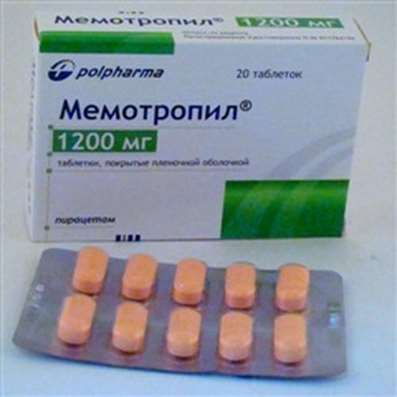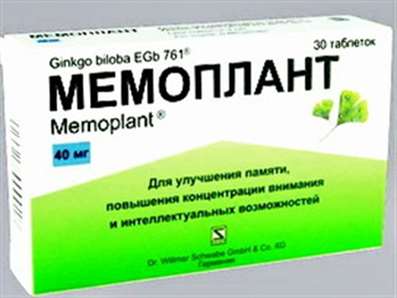Instruction for use: Heferol
I want this, give me price
Dosage form: capsules
Active substance: Ferri fumaras
ATX
B03AA02 Iron fumarate
Pharmacological groups
Macro and trace elements
Stimulators of hemopoiesis
The nosological classification (ICD-10)
D50 Iron deficiency anemia: Iron deficiency in food; Anemia due to violations of hemoglobin synthesis and iron metabolism; Anemia of iron deficiency; Iron / folic deficiency anemia; Iron deficiency anemia
E61.1 Insufficiency of iron: Insufficient food intake of iron; Iron deficiency; Iron deficiency in women during pregnancy; Deficiency of iron and folic acid in pregnancy; Iron deficiency after surgery; Latent iron deficiency; Lack of iron during pregnancy and lactation; Inadequate intake of iron from food; Increased need for iron; Increased need for iron during menstruation; Disturbances of iron absorption from the digestive tract; Severe iron deficiency
I84 Hemorrhoids: Painful hemorrhoidal nodes; External hemorrhoids; Internal hemorrhoids; Inflammation of hemorrhoids; Exacerbation of hemorrhoids; Chronic bleeding hemorrhoids; Acute hemorrhoidal attack
K52.9 Non-infectious gastroenteritis and colitis, unspecified: Syndrome of senile intestine; Diarrhea chronic; Hemocolitis; Digestive tract infections; Collagenous colitis; Mucous colitis; Chronic colitis; Chronic enteritis; Infectious Disease of the GI tract; Colitis associated with taking antibiotics
K90 Intestinal absorption disorders: Maldigestia; Malabsorption syndrome; Malabsorption; Disturbance of fat absorption; Disturbances of iron absorption from the digestive tract; Disorders of absorption of fats in the intestine; Syndrome of the small intestine; Malabsorption syndrome; Syndrome of impaired intestinal absorption; Syndrome of insufficiency of intestinal absorption of amino acids; Reduction of absorption in the digestive tract
K92.2 Gastrointestinal bleeding, unspecified: Gastrointestinal and intestinal bleeding; Acute bleeding from the upper gastrointestinal tract; Gastric bleeding; Gastrointestinal bleeding; Intraoperative abdominal bleeding; Intestinal bleeding; Bleeding in the upper part of the digestive tract; Bleeding gastrointestinal; Bleeding from the upper gastrointestinal tract; Bleeding from the digestive tract; Bleeding intraoperative abdominal; Recurrent bleeding in the digestive tract; Diagnosis of bleeding from the small intestine; Ulcer bleeding; Mallory-Weiss syndrome; Recurrent bleeding from peptic ulcers; Bleeding gastric
N92 Abundant, frequent and irregular menstruation: Metromenorragia; Menorrhagia; Menorrhagia primary; Idiopathic menorrhagia; Menorrhagia; Functional metronormorragia; Primary menorrhagia
N92.1 Abundant and frequent menstruation in an irregular cycle: Metrorrhagia; Dysfunctional metrorrhagia
O99.0 Anemia complicating pregnancy, childbirth and the post-natal period: Anemia during pregnancy; Anemia in the mother; Iron deficiency anemia in pregnancy; Megaloblastic anemia of pregnant women; Iron deficiency anemia in pregnant women
R04.0 Epistaxis: Nasal bleeding; Nasal bleeding; Epistaxis
Z100 * CLASS XXII Surgical practice: Abdominal surgery; adenomectomy; Amputation; Coronary angioplasty; Angioplasty of the carotid arteries; Antiseptic skin treatment for wounds; Antiseptic Hand; Appendectomy; atherectomy; Balloon coronary angioplasty; Vaginal hysterectomy; The coronary bypass; Interventions in the vagina and cervix; Interventions on the bladder; Intervention in the mouth; Restoration and reconstructive surgery; Hand hygiene of medical personnel; Gynecologic surgery; Gynecological intervention; Gynecological surgery; Hypovolemic shock during operations; Disinfection of purulent wounds; Disinfection of wounds edges; Diagnostic intervention; Diagnostic procedures; Cervical Diathermocoagulation; Long-surgery; Replacing the fistula catheters; Infection in orthopedic surgery; Artificial heart valve; cystectomy; Short-term outpatient surgery; Short-term operation; Short surgical procedures; Krikotireotomiya; Blood loss during surgery; Bleeding during surgery and in the postoperative period; Kuldotsentez; laser photocoagulation; laser coagulation; retinal laser coagulation; Laparoscopy; Laparoscopy in Gynecology; CSF fistula; Small gynecological operations; Small surgical procedures; Mastectomy and subsequent plastic; mediastinotomy; Microsurgical operations on the ear; Mukogingivalnye operation; suturing; Minor surgery; neurosurgical operation; Immobilization of the eyeball in ophthalmic surgery; testectomy; pancreatectomy; Perikardektomiya; The period of rehabilitation after surgery; The period of convalescence after surgery; Percutaneous transluminal coronary angioplasty; Pleural thoracentesis; Pneumonia postoperative and posttraumatic; Preparation for surgical procedures; Preparation for surgery; Preparation of the surgeon's hands before surgery; Preparation of the colon for surgical procedures; Postoperative aspiration pneumonia in neurosurgical and thoracic surgery; Postoperative nausea; Postoperative bleeding; postoperative granuloma; postoperative shock; The early postoperative period; myocardial revascularization; Radiectomy; gastric Resection; bowel resection; uterine Resection; liver Resection; enterectomy; Resection of part of the stomach; Reocclusion of the operated vessel; Bonding tissues during surgical procedures; Removal of sutures; Condition after eye surgery; Condition after surgery; Condition after surgery in the nasal cavity; Condition after gastrectomy; Status after resection of the small intestine; Condition after tonsillectomy; Condition after removal of the duodenum; Condition after phlebectomy; Vascular surgery; Splenectomy; Sterilization of surgical instruments; Sterilization of surgical instruments; sternotomy; Dental surgery; Dental intervention in periodontal tissues; strumectomy; Tonsillectomy; Thoracic surgery; Thoracic surgery; total gastrectomy; Transdermal intravascular coronary angioplasty; Transurethral resection; Turbinektomiya; Removal of a tooth; cataract surgery; Removal of cysts; tonsillectomy; Removal of fibroids; Removing the mobile primary teeth; Removing polyps; Removing broken tooth; Removal of the uterus body; Removal of sutures; Fistula likvoroprovodyaschih ways; Frontoetmoidogaymorotomiya; Surgical infection; Surgical treatment of chronic limb ulcers; Surgery; The surgery in the anal area; The surgery on the colon; Surgical practice; The surgical procedure; Surgical interventions; Surgery on the gastrointestinal tract; Surgical procedures on the urinary tract; Surgical procedures on the urinary system; Surgical intervention of the genitourinary system; Surgical procedures on the heart; Surgical manipulation; surgery; Surgery on the veins; Surgical intervention; Vascular surgery; Surgical treatment of thrombosis; Surgery; cholecystectomy; Partial gastric resection; hysterectomy; Percutaneous transluminal coronary angioplasty; Percutaneous transluminal angioplasty; Coronary artery bypass; tooth Extirpation; Extirpation of milk teeth; pulpectomy; pulsative cardiopulmonary bypass; tooth Extraction; teeth Extraction; cataract extraction; Electrocoagulation; endourological intervention; episiotomy; Etmoidotomiya; Complications after tooth extraction
Composition and release form
Capsules - 1 caps.
Iron fumarate 350 mg
In terms of elemental iron, 115 mg
Auxiliary substances: magnesium stearate; Lauric sodium sulfate; lactose; Colloidal silicic anhydride - up to 410 mg.
In the bottle of dark glass 30 pcs .; In the box 1 bottle.
Description of dosage form
Hard gelatin capsules ¹1: the body of the capsule is matte white with a yellowish tinge, the lid is matte dark green. Contents of the capsule: finely granulated red-brown powder with white impregnations.
Pharmachologic effect
Mode of action - Replenishing iron deficiency, hematopoietic, erythropoietic.
Pharmacodynamics
The preparation contains ferrous iron in the form of iron fumarate. Iron stimulates erythropoiesis in the bone marrow, is part of hemoglobin (about 2/3 of the total body iron), myoglobin and some enzymes. With insufficient intake of iron or a violation of its absorption, a latent or clinically pronounced iron deficiency in the body develops (iron deficiency anemia).
Pharmacokinetics
Iron is absorbed in the intestines, gradually being released from the capsules. In healthy people about 10-15% of the dose taken internally is absorbed. With iron deficiency, the absorption increases to 25-30%. The body is excreted in minimal amounts by the kidneys, as well as with feces and bile. In the lactation period, about 0.25 mg / day enter the mother's milk.
Clinical Pharmacology
Receiving capsules provides protection of the teeth and avoids contact with the mucous membrane of the mouth, and a rapid passage through the stomach prevents the development of side effects due to the irritating effect of iron on the gastric mucosa.
During pregnancy, the adequate intake of iron in the body is of particular importance for ensuring the normal development of the fetus and preventing a low birth weight.
Indication of the drug Heferol
Latent or clinically pronounced deficiency of iron (anemia), developed as a result of:
- bleeding (menorrhagia, metrorrhagia, ulceration of the mucous membrane of the gastrointestinal tract, hemorrhoids, nosebleeds, blood loss during surgical interventions);
- increased body requirement for iron (pregnancy, the period of breastfeeding, the period of intensive growth and puberty);
- violations of iron absorption from the digestive tract (chronic diarrhea);
- Inadequate intake of iron from food (treatment and prevention).
Contraindications
Hypersensitivity, hemosiderosis, sidero-achestic anemia (including lead); Anemia not related to iron deficiency (eg hemolytic anemia, megaloblastic anemia caused by a lack of vitamin B12), intestinal diverticulum, intestinal obstruction, regular blood transfusion, simultaneous therapy with parenteral iron preparations.
Application of pregnancy and breastfeeding
There are no adverse effects on the fetus (per child) when the drug is used during pregnancy and breastfeeding.
Side effects
Nausea, vomiting, pain or discomfort in the epigastric region, black staining of the stool, diarrhea or constipation, allergic reactions of varying severity. With prolonged unjustified use - hemosiderosis.
Interaction
Antacids, tetracycline and its derivatives, eggs, milk, coffee, tea reduce the absorption of iron from the digestive tract. Iron delays the absorption from the gastrointestinal tract tetracycline, penicillamine, some quinolones (eg ciprofloxacin, norfloxacin, ofloxacin). Simultaneous therapy with chloramphenicol slows the development of a hematologic response to iron therapy.
Dosing and Administration
Inside, on an empty stomach, 30 minutes before breakfast, washed down with a lot of liquid. Adults and children over 12 years of age - 1 caps. (Prevention), 2 caps. Per day in 1-2 admission (treatment). The course of treatment - 6-12 weeks. The drug is continued for 3-4 months after the normalization of the blood picture.
Overdose
Symptoms of acute overdose: nausea, vomiting, epigastric pain, diarrhea, melena, which can be accompanied by drowsiness, pallor, cyanosis of the skin; In severe cases - collapse, shock or coma and death (lethal dose of iron when ingested - 180-300 mg / kg body weight). In some cases, a dose of 30 mg / kg may be toxic. Symptoms may occur within an hour or several hours.
Treatment: gastric lavage, inducing vomiting. Specific antidote - deferoxamine. Indications for the use of chelate therapy deferoxamine: the dose of ingested divalent iron - 180-300 mg / kg and more; Serum iron concentration above 400 mg%; The concentration of iron in the serum exceeds the total iron binding capacity and / or the patient is in a state of shock or coma. Hemodialysis is ineffective.
Precautionary measures
With special care, patients with peptic ulcers, regional enteritis (Crohn's disease), ulcerative colitis and hepatitis should be prescribed. Data on the adverse effects of the drug on the ability to drive vehicles and control mechanisms are absent.
Special instructions
To prevent constipation, the drug should be washed down with a large amount of liquid. If taking the drug causes pain in the epigastrium, it should be taken with food. Reception of Heferol and tetracycline (or ciprofloxacin) is recommended to be divided in time.
Storage conditions of the drug Heferol
In dry, the dark place at a temperature of 15-25 ° C.
Keep out of the reach of children.
Shelf life of the drug Heferol
5 years.
Do not use after the expiry date printed on the package.

 Cart
Cart





